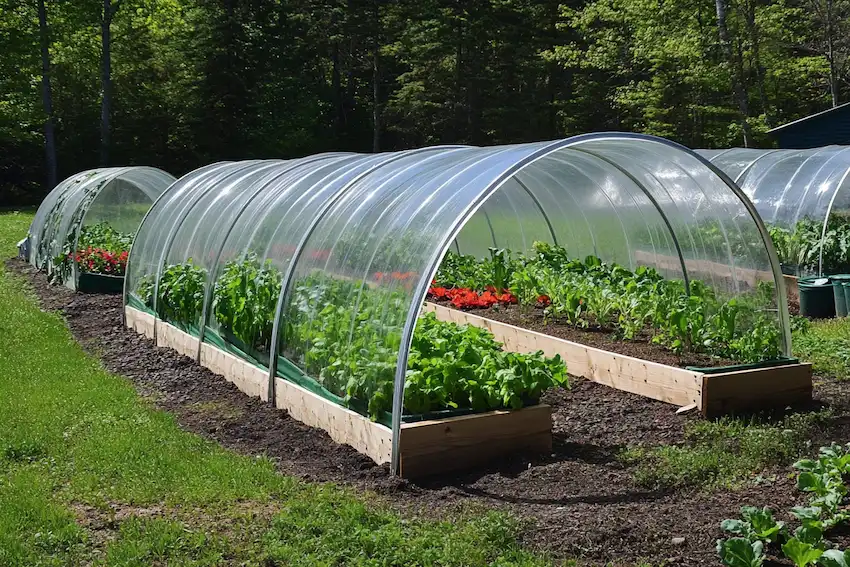Extend Your Growing Season: Building a Hinged Hoophouse for Raised Bed Gardens
Creating a hinged hoophouse for your raised bed garden is an excellent way to extend your growing season, protect your plants from harsh weather conditions, and keep pests at bay. This detailed guide will walk you through the process of building a hinged hoophouse, ensuring that even beginners can follow along and achieve great results.

Materials Needed:
- PVC pipes (1/2 inch diameter)
- Heavy-duty plastic sheeting (6 mil)
- Hinges
- Screws (stainless steel)
- Wooden planks (for the raised bed frame)
- Pipe clamps
- UV-resistant zip ties
- Tools: Drill, saw, measuring tape, staple gun
Step 1: Prepare Your Raised Bed
If you haven’t already, construct your raised bed using wooden planks. Ensure it’s sturdy and well-positioned in your garden, ideally in a spot that receives ample sunlight. The size of your raised bed will dictate the dimensions of your hoophouse, so plan accordingly.
Step 2: Measure and Cut PVC Pipes
Measure the length of your raised bed and cut PVC pipes to create hoops that will span across the width of the bed. The number of hoops will depend on the length of your bed; aim for a hoop every 2-3 feet. Bend the pipes gently and insert the ends into the soil on either side of the bed, or attach them to the wooden frame with pipe clamps to form arches.
Step 3: Install Hinges
Select one side of the raised bed to be the fixed base of your hoophouse. On the opposite side, where the opening will be, attach hinges to the wooden frame. These hinges will allow your hoophouse to open and close easily for access to the plants.
Step 4: Attach PVC Pipes to Hinges
Secure the PVC pipes to the hinged side of the raised bed using screws and pipe clamps. Ensure that the pipes are firmly attached and that the structure can swing open and close smoothly.
Step 5: Cover with Plastic Sheeting
Drape the heavy-duty plastic sheeting over the PVC hoops, ensuring there’s enough excess to cover the ends of the raised bed. Trim the plastic as needed, leaving extra material for securing it to the ground or frame.

Step 6: Secure the Plastic Sheeting
Use UV-resistant zip ties to secure the plastic sheeting to the PVC hoops tightly. On the hinged side, staple the plastic to the wooden frame, ensuring it’s taut and secure. On the fixed side and ends, bury the excess plastic in the soil or secure it to the frame to keep the interior protected from the elements.
Step 7: Final Adjustments
Test the hinged hoophouse by opening and closing it to ensure the plastic is not overly stretched or loose. Make any necessary adjustments to the hinges, plastic, or frame to improve functionality.
Step 8: Ventilation
To prevent overheating on sunny days, create ventilation by rolling up the side of the plastic sheeting or installing additional vents. This will help regulate temperature and humidity inside the hoophouse.
Maintenance Tips:
- Check the structure regularly for any damage or wear, especially after severe weather conditions.
- Replace the plastic sheeting as needed to ensure it remains clear and durable.
- Lubricate the hinges periodically for smooth operation.
Building a hinged hoophouse for your raised bed garden is a rewarding project that can significantly benefit your plants by providing them with a more controlled environment. By following these detailed steps, you’ll create a functional and durable hoophouse that enhances your gardening experience. Whether you’re looking to extend your growing season or protect your plants from pests, a hinged hoophouse is a practical and effective solution.



















